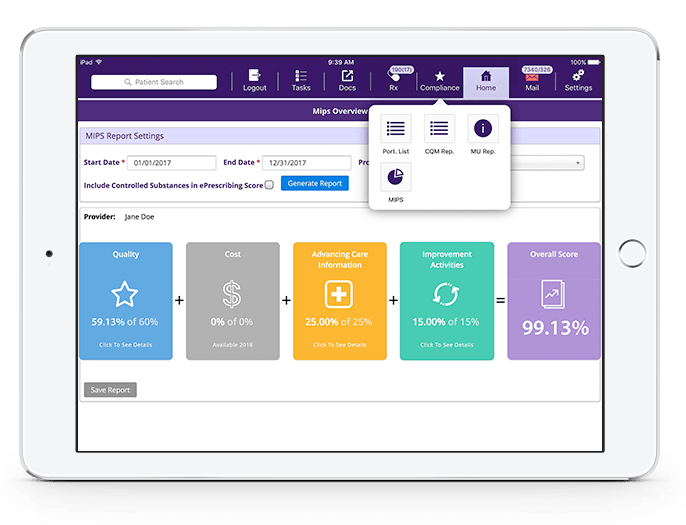Six Signs You Should Break Up With Your Ophthalmology EMR

Maybe it’s time to make a switch when it comes to your ophthalmology software
If you find that you and your staff struggle with the challenges detailed below or have other frequent frustrations, it may signal that the time for change has arrived.
1. It complicates or disrupts your workflow.
The right ophthalmology EMR system should make workflow easier, not more difficult. Drawing tools that don’t backfill as findings, limited image views, no Protocols to help streamline frequently encountered traditions and lots of typing may be some red flags.
If the EMR you currently use wasn’t built specifically for ophthalmologists, making the switch to one actually built by practicing ophthalmologists can make a world of difference. And having an EMR system built for various ophthalmic subspecialties can really set one system apart from others.
Using an ophthalmic EMR should add time back into your day, not detract from it. Strong implementation, training and support teams, in addition to a robust, intuitive and innovative ophthalmology EMR, make for a successful combination.
2. It’s not a true cloud ophthalmology EMR.
Perhaps you’ve come to find out that what you once thought was a cloud EMR actually isn’t and moreover it prevents you from experiencing the benefits that come with a true cloud. A cloud ophthalmology EMR system should function as a Software as a Service (SaaS) solution and provide scalability, mobility, reduced IT costs and enhanced speed and performance compared to a less than ideal server-based EMR.
3. Updates? What updates?
Has the ophthalmology software hit a plateau? When was the last time the vendor released an update? Or that your feedback mattered for product enhancements? Hmmm…
Good technology and software should undergo frequent updates and improvements so the product evolves over time. As your practice grows, the technology you have in place should grow with you. You really know an EMR company is client-centric when feedback from actual clients factors into product changes. If you find yourself frustrated with the lack of innovation from your EMR vendor, it just may be a sign that it’s time for a change.
4. Unprepared for MIPS.
Does your EMR have a built-in Merit-based Incentive Payment System (MIPS) solution that can help capture your MIPS data within the flow of the exam? If not, this should raise a red flag. If your current EMR lacks a connection to IRIS or other registries and you can’t view your estimated MIPS score before submitting, this may be yet another clue it’s time to make a switch. An ophthalmology EMR with a built-in MIPS solution should be on your checklist when vetting a potential new solution.
5. You hear crickets.
What happens when you reach out to support? Do they respond in a timely fashion? Do they provide a helpful solution? Or escalate challenges as necessary? As consumers, we know a positive or negative customer service experience can make or break your opinion about a company and may even make you consider alternatives.
The EMR vendor you work with should have a clear process for submitting requests and provide responsive assistance. Understand and ask where the company’s support team is based too. Are they stateside? A company that employs individuals with real-world clinical backgrounds is always a nice bonus.
Outside of traditional support channels, ask if you will have access to a knowledge base complete with webinars, helpful guides, videos and message boards to learn not just from the EMR company’s staff but from other active clients. Make sure on-going education is offered.
6. A majority of ‘no’s’.
If you answer ‘no’ to most items on the below list, that may help determine that the time has come to make a move from your current ophthalmology EMR system.
- Is the EMR system designed for ophthalmology?
- Does the ophthalmic EMR accommodate sub-specialties such as cataract and refractive, glaucoma, retina, oculoplastics and pediatrics?
- Does it have built-in diagnoses, treatment options and coding functionality needed for ophthalmology?
- Does it meet the workflow requirement of your ophthalmology practice?
- Can you touch and swipe on a native iPad EMR interface instead of typing or having to use a desktop computer?
- Does your ophthalmology EMR have a built-in MIPS intelligence platform?
- Is it a true cloud-based EMR platform?
- Does it provide you with mobile access from virtually any location with a secure internet connection?
- Does the company offer solutions that go beyond its ophthalmology EMR system?
- Do you have the ability to use the vendor’s patient portal and an iPad check-in kiosk that integrate with its EMR system?
- Is the support team based in the United States?
- Is the support team responsive to your needs as a customer?
- Does the EMR company have a positive reputation in the market? From its current clients?
- Is the company financially stable?
If the benefits of making a switch to a new ophthalmology EMR system outweigh the cons, it may be time to make a strategic transition. Your ophthalmology EMR vendor should function as an extension of your team helping to improve the clinical, operational and financial aspects of your practice.

